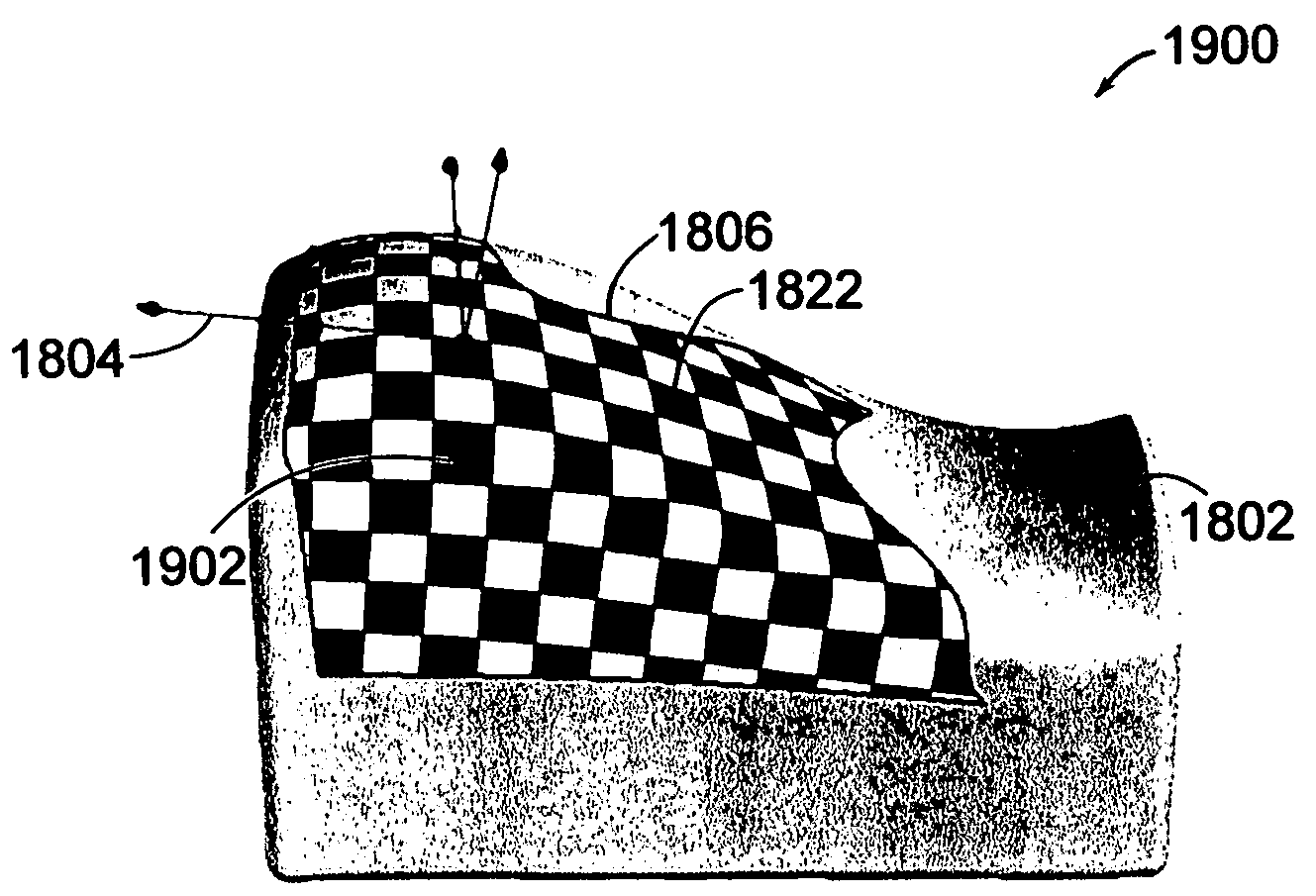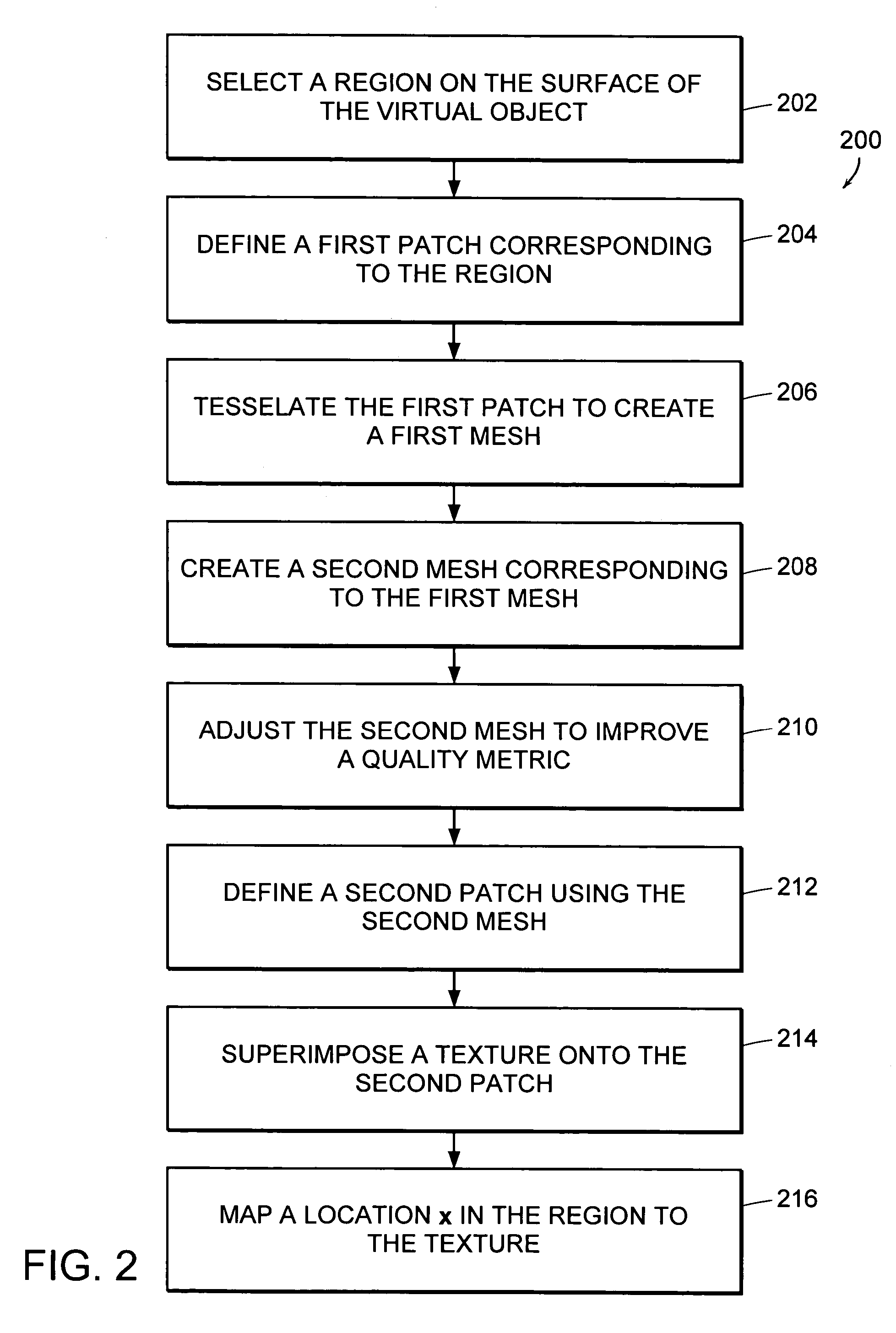Haptic graphical user interface for adjusting mapped texture
a user interface and graphical technology, applied in the field of graphical user interfaces, can solve the problems of unsatisfactory texture mapping accuracy, and inability to map texture onto three-dimensional models
- Summary
- Abstract
- Description
- Claims
- Application Information
AI Technical Summary
Benefits of technology
Problems solved by technology
Method used
Image
Examples
Embodiment Construction
[0098]The invention provides improved methods for mapping a point on the surface of a three-dimensional (3D) virtual object onto a corresponding point on a two-dimensional (2D) texture. By using these mapping methods, it is possible to wrap a 2D texture onto the surface of a 3D virtual object within an arbitrarily-shaped, user-defined region in a way that minimizes the distortion of the wrapped texture.
[0099]Texture mapping is a process by which points on the surface of a virtual object are related to points of a texture. For example, a point on the surface of a 3D virtual object can be mapped to a point on a 2D surface; or, equivalently, a point on the 2D surface can be mapped to a point on the surface of the 3D virtual object. The 3D virtual object is generally represented in object space, for example, as a system of elements and / or points in a Cartesian (x,y,z) coordinate system.
[0100]FIG. 1A is a screenshot 100 of a three-dimensional object 102 where locations within a user-draw...
PUM
 Login to View More
Login to View More Abstract
Description
Claims
Application Information
 Login to View More
Login to View More - R&D
- Intellectual Property
- Life Sciences
- Materials
- Tech Scout
- Unparalleled Data Quality
- Higher Quality Content
- 60% Fewer Hallucinations
Browse by: Latest US Patents, China's latest patents, Technical Efficacy Thesaurus, Application Domain, Technology Topic, Popular Technical Reports.
© 2025 PatSnap. All rights reserved.Legal|Privacy policy|Modern Slavery Act Transparency Statement|Sitemap|About US| Contact US: help@patsnap.com



